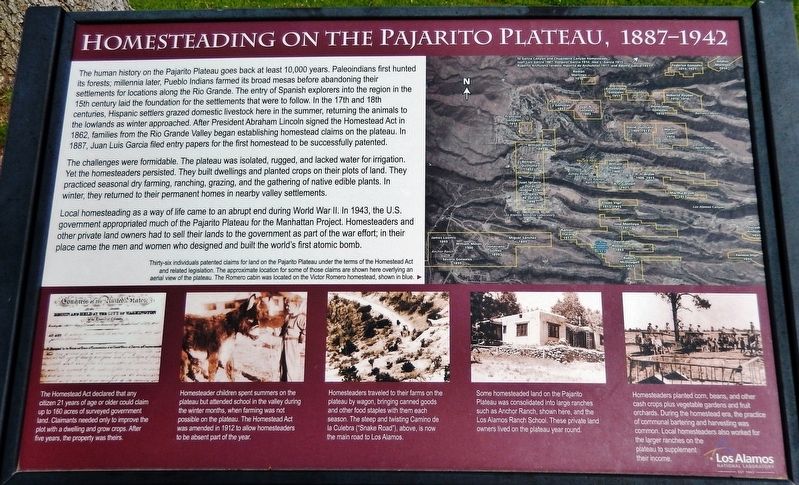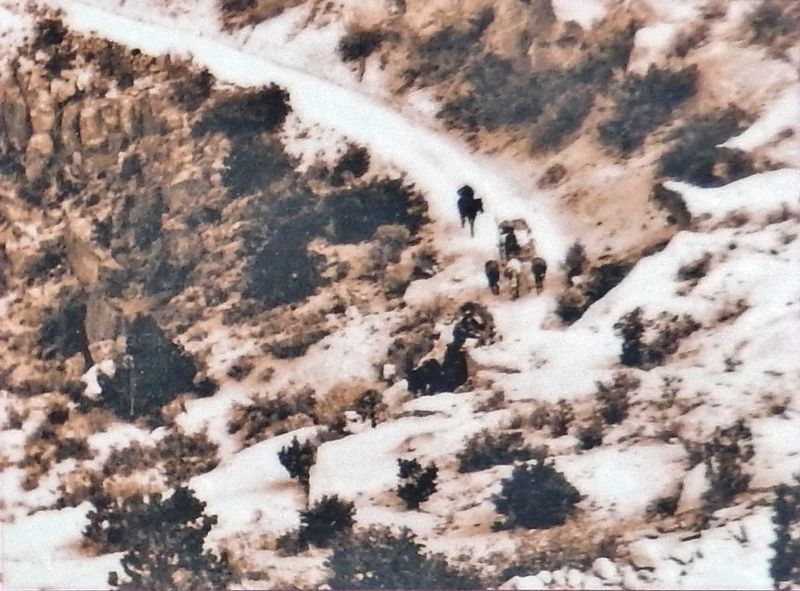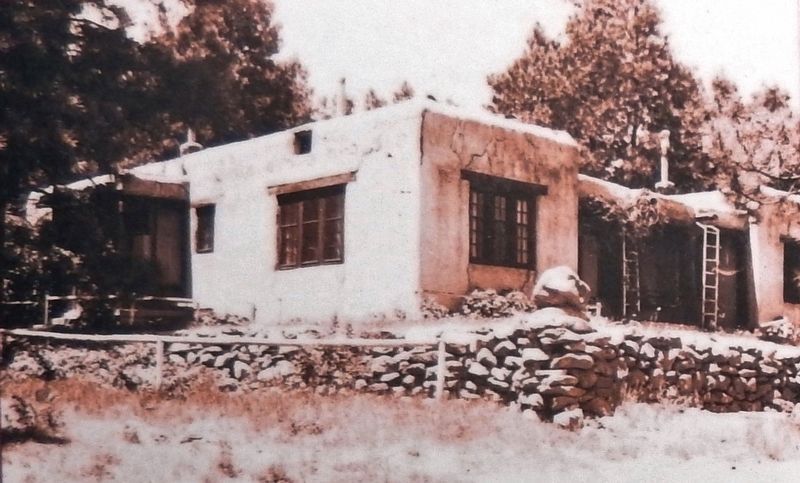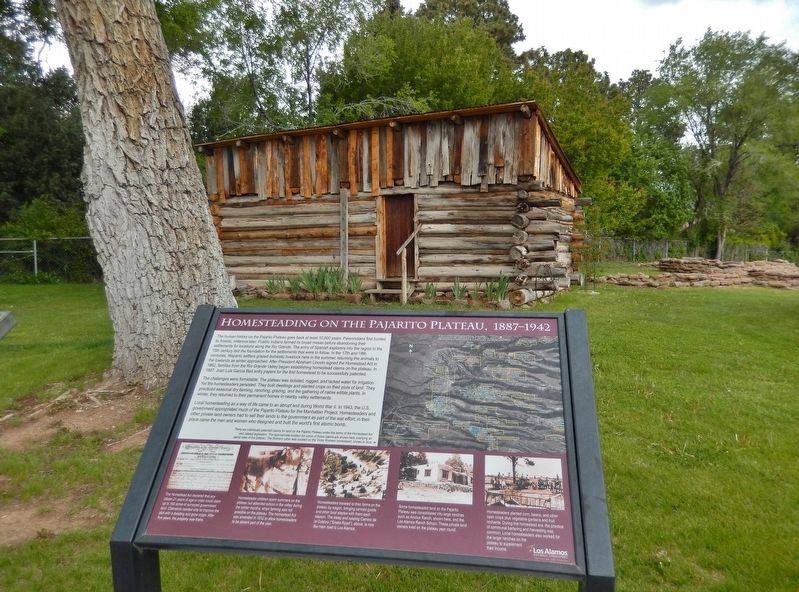Los Alamos in Los Alamos County, New Mexico — The American Mountains (Southwest)
Homesteading on the Pajarito Plateau, 1887-1942
Inscription.
The human history on the Pajarito Plateau goes back at least 10,000 years. Paleoindians first hunted its forests; millennia later, Pueblo Indians farmed its broad mesas before abandoning their settlements for locations along the Rio Grande. The entry of Spanish explorers into the region in the 15th century laid the foundation for the settlements that were to follow. In the 17th and 18th centuries, Hispanic settlers grazed domestic livestock here in the summer, returning the animals to the lowlands as winter approached. After President Abraham Lincoln signed the Homestead Act in 1862, families from the Rio Grande Valley began establishing homestead claims on the plateau. In 1887, Juan Luis Garcia filed entry papers for the first homestead to be successfully patented.
The challenges were formidable. The plateau was isolated, rugged, and lacked water for irrigation. Yet the homesteaders persisted. They built dwellings and planted crops on their plots of land. They practiced seasonal dry farming, ranching, grazing, and the gathering of native edible plants. In winter, they returned to their permanent homes in nearby valley settlements.
Local homesteading as a way of life came to an abrupt end during World War II. In 1943, the U.S. government appropriated much of the Pajarito Plateau for the Manhattan Project. Homesteaders and other private land owners had to sell their lands to the government as part of the war effort; in their place came the men and women who designed and built the world's first atomic bomb.
(photo captions)
• The Homestead Act declared that any citizen 21 years of age or older could claim up to 160 acres of surveyed government land. Claimants needed only to improve the plot with a dwelling and grow crops. After five years the property was theirs.
• Homesteader children spent summers on the plateau but attended school in the valley during the winter months, when farming was not possible on the plateau. The Homestead Act was amended in 1912 to allow homesteaders to be absent part of the year.
Erected by Los Alamos National Laboratory.
Topics. This historical marker is listed in these topic lists: Agriculture • Hispanic Americans • Settlements & Settlers • War, World II. A significant historical year for this entry is 1887.
Location. 35° 52.961′ N, 106° 18.089′ W. Marker is in Los Alamos, New Mexico, in Los Alamos County. Marker can be reached from Juniper Street just west of 19th Street. Marker is located along the walkway just north of the Los Alamos Historical Museum. Touch for map. Marker is at or near this postal address: 2132 Central Avenue, Los Alamos NM 87544, United States of America. Touch for directions.
Other nearby markers. At least 8 other markers are within walking
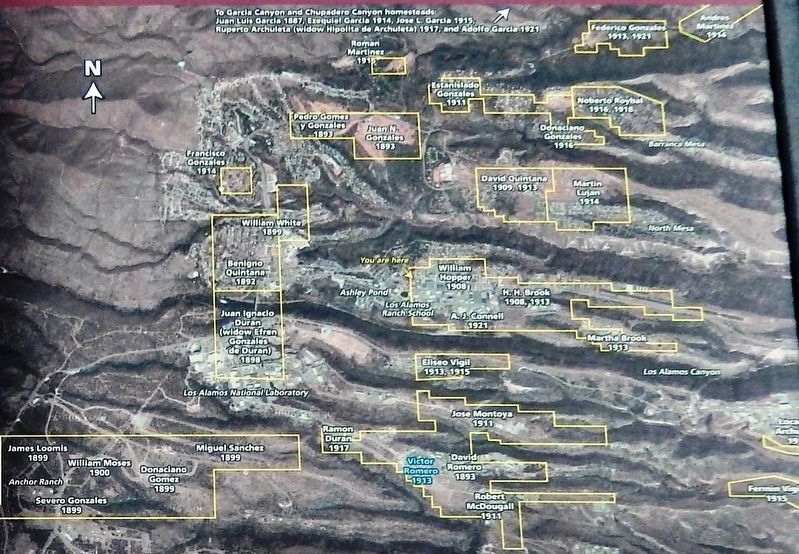
2. Marker detail: Homestead Claims on the Plateau
Thirty-six individuals patented claims for land on the Pajarito Plateau under the terms of the Homestead Act and related legislation. The approximate location for some of those claims are shown here overlying an aerial view of the plateau. The Romero cabin was located on the Victor Romero homestead, shown in blue.
Related markers. Click here for a list of markers that are related to this marker. Los Alamos Historical Walking Tour
Also see . . . Hispanic Homesteaders and the Los Alamos National Laboratory. National Park Service website entry (Submitted on December 8, 2023, by Larry Gertner of New York, New York.)
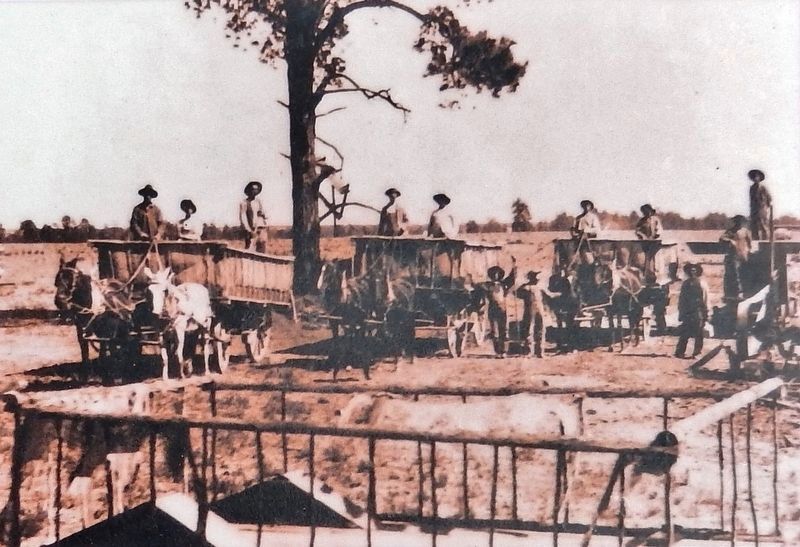
5. Marker detail: Homesteader Agriculture
Homesteaders planted corn, beans, and other cash crops plus vegetable gardens and fruit orchards. During the homestead era, the practice of communal bartering and harvesting was common. Local homesteaders also worked for the larger ranches on the plateau to supplement their income.
Credits. This page was last revised on December 8, 2023. It was originally submitted on September 21, 2020, by Cosmos Mariner of Cape Canaveral, Florida. This page has been viewed 578 times since then and 93 times this year. Photos: 1. submitted on September 24, 2020, by Cosmos Mariner of Cape Canaveral, Florida. 2, 3, 4, 5, 6. submitted on September 25, 2020, by Cosmos Mariner of Cape Canaveral, Florida.
